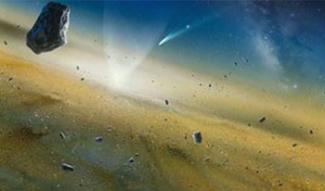Description
The study of disc kinematics has recently opened up as a promising method to detect unseen planets. However, a systematic, statistically meaningful analysis of such an approach remains missing in the field. I will present recent work on an automated, statistically robust technique to identify kinematical perturbations induced by the presence of planets in gas discs. I will also discuss on the impact of gas gaps and vertical structure on observable velocities, as well as variations in the retrieved perturbations as a function of the mass and azimuth of the planet. Our method, powered by the "discminer" channel-map fitting package, takes advantage of coherent velocity fluctuations to robustly detect planets.

